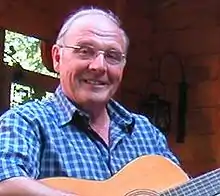Veluws dialect
Veluws is a Dutch Low Saxon dialect which is spoken on the Veluwe. The language was recognized by the government of the Netherlands in 1996 (as being part of Low Saxonian).[1]
| Veluws | |
|---|---|
| Veluws | |
| Native to | Netherlands |
| Official status | |
Official language in | Netherlands Recognized in 1996 (as being part of Low Saxonian).[1] |
| Language codes | |
| ISO 639-3 | vel |
| Glottolog | velu1238 |
 Geographical location of Veluws (colour: light green) among the other minority and regional languages and dialects of the Benelux countries | |
Geographic distribution
Veluws is spoken in the Central Netherlands, in the Northwest of Gelderland.
Dialects

Veluws is usually divided into two main dialects, West-Veluws (West Veluws) and Oost-Veluws (East Veluws), these two dialects are reasonably similar but differ in grammar. For example: in Oost-Veluws they say ie warkt/wärkt (you are working) and in West-Veluws jie warken/waarken (you are working).
Lexical similarities
West-Veluws is also more influenced by Dutch. The closer one gets to the border with Oost-Veluws, the result usually results in more the dialects differed from Standard Dutch. For example, in the central part where West-Veluws is spoken they say hie staot, in the North Western part they say hij steet compared to hij/hee stiet 'he is standing' in Oost-Veluws, this already has a more Low Saxon influence. Hattem, the North Eastern part where & when Oost-Veluws is spoken, it seems to "have" or in the direct mentioned, 'has a' Sallandic influence.
Classification
It is not well defined what constitutes a language versus a dialect, but Veluws is generally considered to be a dialect of Low Saxon, classified Indo-European, Germanic, West, Low Saxon-Low Franconian, Low Saxon.[1]